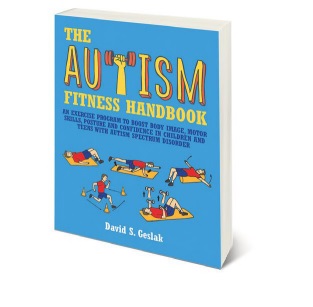What a parent of a newly diagnosed child may not realize is that PT & OT end when goals are met or children “age out.” Also, these services are not designed to meet children and adults’ daily or weekly physical activity requirements. I want to be clear, exercise does not and should not replace OT or PT. These are critical therapies that exercise professionals do not have expertise in. But exercise serves its own purpose, and should not be lumped in with PT, OT, or even physical education (PE) and adapted physical education (APE).
The Every Student Succeeds Act4 and the Individuals with Disabilities Education Act 7 support students with autism and all disabilities participation in physical education in schools. Unfortunately, many students with disabilities do not receive appropriate PE services or the full benefits from PE. This was the primary reason Brody’s mom called me.
There is a lack of understanding of how to effectively deliver exercise for those with autism in communities worldwide, in our schools, and ironically, in PE and APE. Only 14 states in the United States require an advanced certification for physical educators teaching students with disabilities. That leaves the other 36 states not requiring any specialized training in their undergraduate PE teacher education preparation.
Undergraduate PE programs meet the Society of Health and Physical Educators (SHAPE America) state standards for PE licensure by requiring students to only take one class in APE.12 When that class is passed, the teacher is deemed "certified" to instruct all students with disabilities. With only one course in APE, new PE/APE teachers are woefully unprepared to lead a classroom of students with a variety of disabilities.
PHYSICAL EDUCATION, OR SPORT EDUCATION?
While PE can be a great way for some with autism to get physical activity, many of these programs are focused on sports, not individualized exercise. Programs focused on sport will likely set students up for failure.
Sports can be difficult because they involve social communication and interaction, both of which are persistent deficits directly related to ASD. Also, many of the
unstructured sports (e.g., basketball, soccer) taught in PE/APE are taking place in the most un-sensory friendly environment in the entire school… the gym! The social and communication demands associated with sports may cause significant effort and anxiety for individuals with ASD as they consciously calculate what is socially intuitive for others (2). In an environment with kids running, jumping, screaming, echoing of sounds, and objects being thrown, kicked, or hit it's no wonder why many of those with ASD are left wandering and wondering in PE – if they get PE at all.
Even with all the dedicated and tireless research that has shown exercise has a positive impact on autism beyond the gym, it's a shock (no, it's actually sad and frustrating) that exercise is not getting the attention it deserves by more schools. Supporting research for the autism community shows that exercise can improve focus, on-task behavior, lan
language development, and reduce maladaptive or stereotypical behaviors.5,9,11,13,14 In a study published in Psychology in the Schools, the authors examined the impact of antecedent physical activity on academic engagement time among third grade boys with autism. The authors concluded “participation in a physical activity intervention contributed to overall increased academic engagement for high-functioning students diagnosed with an ASD”.9 Furthermore, a meta-analysis of 16 studies suggested that on average, exercise interventions led to a 37% improvement in symptoms of autism, specifically b

DOWNWARD DOG: One way to introduce exercise is through yoga. Pairing the movements with words like "dog," "cat," and "table" can enhance vocabulary by making connections with the targeted words used.

Title: The Autism Fitness Handbook
Author: David S. Geslak
Publisher: Exercise Connection Publication
Date: April 2011 Paperback: 62 pages ISBN-13: 978-0615470573
Available at: amazon.com and barnesandnoble.com
Legislation has been passed (for years!) that those with ASD and other disabilities are entitled to specialized physical education in the schools. Everyone needs to work together to use the resources available to provide the proven benefits of exercise to this deserving population.